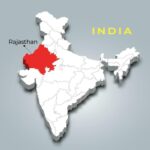Sikkim: 7 Remarkable Facts About Its Rich History, Culture, and Impact on Society
Introduction
Nestled in the northeastern part of India, Sikkim is a small yet captivating state that often surprises visitors with its beauty, history, and cultural significance. Known for its majestic Himalayan peaks, including Kangchenjunga, the third-highest mountain in the world, Sikkim is a unique blend of natural beauty, rich history, and diverse cultures. Despite its small size, Sikkim plays an important role in India’s cultural and geographical landscape. This article explores Sikkim’s history, the impact of daily life, its cultural significance, and how the state continues to thrive in a rapidly modernizing world.
History
The history is deeply entwined with its geography and strategic location between India, Nepal, Bhutan, and Tibet. Originally part of the Kingdom of Sikkim, it became a protectorate of India after it signed a treaty in 1890. Sikkim remained an independent monarchy until it officially became the 22nd state of India in 1975 after a referendum in which the people voted to join India.
Prior to its merger with India, Sikkim had a rich royal history. The Chogyal dynasty ruled the kingdom for centuries, with the king, known as the Chogyal, being the head of state and government. During British colonial rule, Sikkim was strategically important due to its location as a buffer state between India and China, and its relationship with Tibet and Nepal.
After its integration into India, Sikkim experienced social and political changes. The Sikkimese people, comprising of Nepali, Bhutia, and Lepcha communities, have since worked together to maintain the harmony of their diverse cultures.
Daily Life: A Blend of Tradition and Modernity
Life is a harmonious blend of traditional practices and modern living, where people continue to uphold their customs while adapting to new technologies and lifestyles. Some key aspects of daily life in Sikkim are as follows:
- Agriculture: It’s economy is largely based on agriculture. People rely on farming, cultivating crops like rice, cardamom, potatoes, and vegetables. Cardamom is one of the major cash crops, and Sikkim is one of the largest producers of this spice in India. The state also has a strong tradition of organic farming, with the government declaring Sikkim the first fully organic state in India in 2016.
- Cultural Practices: The daily life of the people of Sikkim is deeply influenced by their diverse cultures. The Bhutia people follow Tibetan Buddhism, while the Nepali community primarily practices Hinduism. The Lepcha people, the indigenous community of the state, also have their own unique culture and spiritual practices. These different religious beliefs coexist peacefully, with temples, monasteries, and stupas dotting the landscape.
- Cuisine: It’s cuisine is an amalgamation of Tibetan, Nepali, and Indian influences. Common dishes include momos (dumplings), thukpa (noodle soup), phagshapa (pork curry with radish), and sel roti (a type of rice doughnut). The food in Sikkim reflects its cold climate, with hearty meals being a staple. Local beverages like buttermilk and chhaang (a millet-based alcoholic drink) are also widely enjoyed.
- Festivals: Festivals are an integral part of life in Sikkim. Losar, the Tibetan New Year, is one of the most important festivals, marked by feasts, prayers, and traditional dances. Buddhist Monlam prayer ceremonies are also significant, drawing people to monasteries to offer prayers for peace. Maghe Sankranti and Dashain are among the Hindu festivals that are celebrated with great zeal in the Nepali community.
- Architecture: It’s architecture reflects its diverse cultural influences. Traditional wooden houses with intricately carved windows and doors are common in rural areas. Buddhist monasteries, like Rumtek Monastery and Tashiding Monastery, are architectural gems and serve as places for meditation and learning. The Palace of the Chogyals in Gangtok, the state capital, is a reminder of the region’s royal past.
Key Facts
- Capital: The capital of Sikkim is Gangtok, which serves as the political, economic, and cultural hub of the state. It is known for its scenic beauty, bustling markets, and vibrant street life.
- Geography: It is situated in the eastern Himalayas and shares borders with Nepal, Bhutan, and China (Tibet). It is famous for its stunning views of the Kangchenjunga range and its many trekking trails, including those that lead to high-altitude lakes like Gurudongmar Lake.
- Language: The official language of Sikkim is Nepali, but Hindi and English are also widely spoken, particularly in the capital and urban areas. Bhutia and Lepcha are also spoken in different regions.
- Economy: Agriculture, tourism, and small-scale industries contribute significantly to Sikkim’s economy. Sikkim is also known for its rich biodiversity, attracting eco-tourism enthusiasts and trekkers from all over the world.
- Biodiversity: The state is a biodiversity hotspot, with unique species like the red panda and Himalayan tahr found in the Khangchendzonga National Park. The rich flora and fauna of Sikkim attract nature lovers, scientists, and eco-tourists alike.
Significance
It holds immense significance in various ways:
- Environmental Significance: As India’s first fully organic state, Sikkim plays a key role in promoting sustainable agriculture. The state’s government has emphasized organic farming as a way to protect the environment and promote eco-friendly practices, ensuring that the land remains fertile and free from harmful chemicals.
- Cultural Significance: The state’s harmonious blend of Buddhist, Hindu, and indigenous cultures makes Sikkim an important model of coexistence. The people of Sikkim have managed to preserve their traditional customs, rituals, and festivals despite the rapid pace of modern life.
- Geopolitical Significance: It’s location as a border state makes it strategically important for India. Its proximity to China, Nepal, and Bhutan means that it plays an essential role in maintaining peace and security in the region.
- Tourism Significance: It has become an important tourist destination in India, attracting visitors with its breathtaking landscapes, trekking routes, monasteries, and tranquil environment. Eco-tourism is particularly important for the state, promoting sustainable travel practices.
Observance of Key Events and Festivals
It celebrates a variety of religious and cultural festivals, including:
- Losar: The Tibetan New Year, celebrated with great fervor by the Bhutia community, is marked by prayers, feasts, and traditional dances.
- Maghe Sankranti: A major Hindu festival celebrated by the Nepali community in January, marked by feasts and religious rituals.
- Buddhist Monlam Prayer Festival: This festival involves a series of prayers and ceremonies conducted by monks, seeking peace and prosperity.
- Baisakhi: A harvest festival that celebrates the agricultural abundance of the region, observed with traditional dances and offerings.
Wishing for the Future
As It continues to embrace modernity while preserving its rich cultural heritage, the state has the potential to thrive economically, socially, and environmentally. With its commitment to sustainable practices and its strong sense of community, Sikkim sets an example for the rest of the world to follow. Preserving its biodiversity, promoting ecotourism, and maintaining its cultural diversity will be key for Sikkim’s continued growth in the years to come.
FAQs
- What is famous for? It is known for its stunning Himalayan landscapes, Kangchenjunga, Buddhist monasteries, and the fact that it is India’s first fully organic state.
- What languages are spoken? The primary language is Nepali, but Bhutia, Lepcha, Hindi, and English are also spoken.
- What are some major tourist attractions? Popular tourist spots include Gangtok, Tshangu Lake, Rumtek Monastery, Kangchenjunga National Park, and Gurudongmar Lake.
- How is the economy shaped? The economy is primarily based on agriculture, tourism, and organic farming. The state is also known for its biodiversity and rich flora and fauna.
- What is the traditional food of Sikkim? Some traditional dishes of Sikkim include momos, thukpa, sel roti, and phagshapa.
Conclusion
It is a state of immense beauty and significance, blending rich traditions with progressive values. Whether it’s the tranquil landscapes, diverse cultures, or the peaceful coexistence of its communities, Sikkim stands as a testament to how different cultures can come together to build a unified and prosperous society. As it continues to grow, Sikkim remains a beacon of sustainability, culture, and harmony in the heart of the Himalayas.










